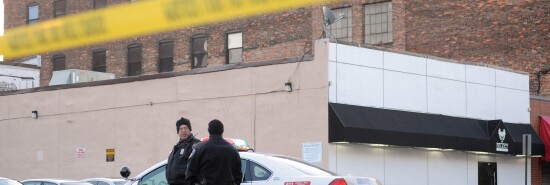
Baltimore’s failures are what happens when cities embrace anti-police activism
Zachary Faria
Video Embed
When a Democratic-run city surrenders to crime, you end up with many bleak situations, such as the mayor of St. Louis, Missouri, boasting about falling asleep to a “lullaby of bullets.” Perhaps no city is a bleaker representation of a crime collapse than Baltimore, Maryland.
David Simon, the creator and executive producer for The Wire who spent over a decade working as a journalist in Baltimore, dismissed the left-wing activist idea that people who want “law and order” are all secret racists.
THE ALARMING LINK BETWEEN SCHIZOPHRENIA AND MARIJUANA
“The only people I hear arguing that all policing is oppression or that any effort to maintain any law or order, are never people trying to raise families, or reside or work in West Baltimore or Eastside or Pimlico or Cherry Hill,” Simon said. “They are either academics, commentators or ideologues who very much live elsewhere. The people I hear from want the shooters to be locked the f*** up.”
Simon then laid out just how far Baltimore has fallen in the last 30 years, noting that the city’s population has declined, the number of overall homicides has increased, and the percentage of homicides that were solved has declined, all while the city has improved its cosmetic diversity in the Police Department and other halls of leadership. “Not everything is race,” Simon said.
The numbers show just how bleak the situation in the city has become. In 1990, Baltimore had a population of more than 736,000, which is now down to nearly 576,000. Despite the population loss, Baltimore is now matching its homicide numbers from the 1990s, with over 300 homicides every year since 2015.
What happened in Baltimore in 2015? Freddie Gray died in police custody, spawning Black Lives Matter protests (and riots) and a steep decline in arrests and police presence in a city that bent itself to the whims of activists. Baltimore had actually made progress on homicides, recording fewer than 200 homicides in 2011 for the first time since 1978. Then there was a minor increase, and the city’s police commissioner said in 2014 that “200 homicides is unacceptable.”
CLICK HERE TO READ MORE FROM THE WASHINGTON EXAMINER
In the year of the Freddie Gray riots, Baltimore then saw that number explode to 342 homicides. Over the past eight years, Baltimore has averaged 333 homicides. And, as Simon claimed, the homicide clearance rate has tanked. More homicides with a smaller population, and far more homicides going unsolved as police withdrew from communities: That is the story of Baltimore during the last three decades.
That is what happens when activists, voters, and city leaders decide that “law and order” is a racist dog whistle and that police should be treated as enemies. Baltimore’s collapse should have served as a warning of what not to do, and yet the Black Lives Matter riots of 2020 simply encouraged more Democratic cities to embrace the same failed strategy Baltimore has embraced for years.
